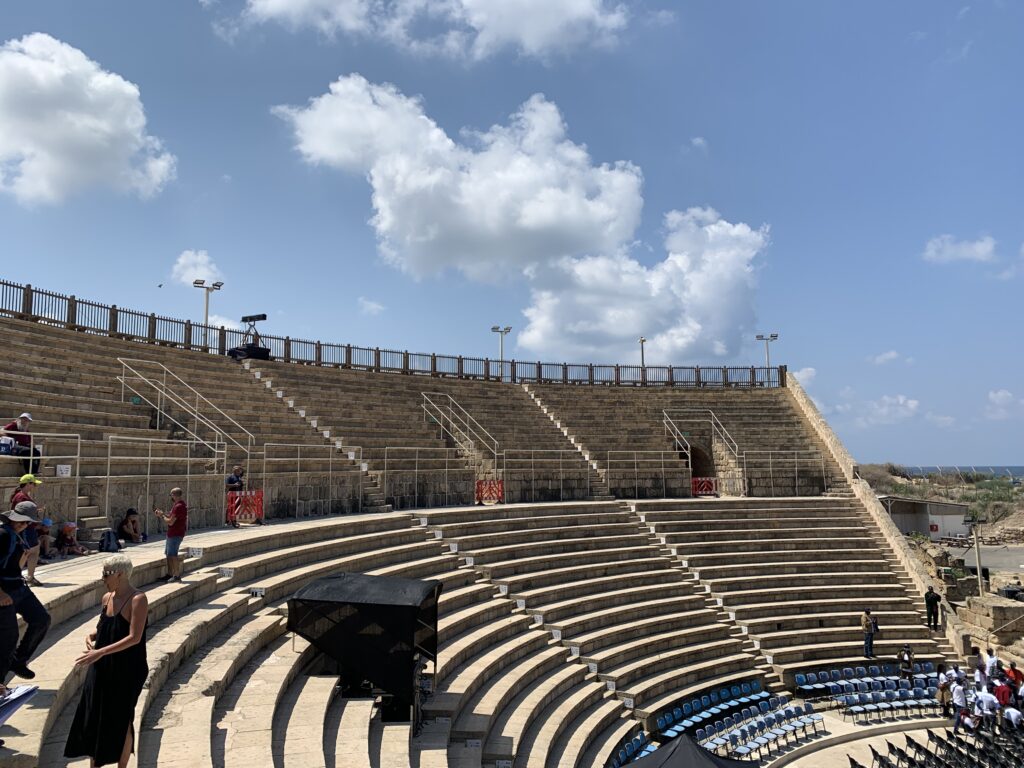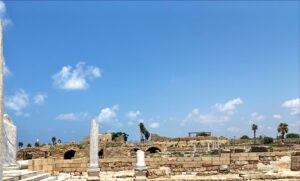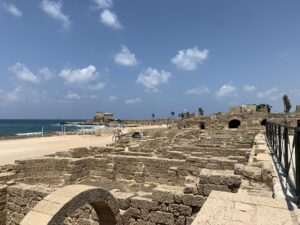Nestled within the historical tapestry of Caesarea Maritima, the theater stands as a tangible testament to Herod’s fervent desire to infuse Hellenistic culture into the fabric of the Jewish nation. Herod’s passion for Hellenistic aesthetics is palpably etched into the architectural grandeur of the Caesarea theater, reflecting an ambitious vision of cultural amalgamation.
In the broader context of the Roman world, the theater in Caesarea Maritima occupies a significant place. Modeled after the architectural marvels of Rome, it exemplifies the grandiosity and sophistication of Roman theaters. Serving as a communal space for entertainment, the theater played a pivotal role in Roman social life, fostering a sense of collective identity and shared cultural experiences.
This remarkable structure, with its seating capacity of approximately 4,000 spectators, stands as a testament to the architectural prowess of the time. The audience, arranged on stone benches meticulously reconstructed to mirror the original design, enjoyed a panoramic view of the performances unfolding on the stage. This expansive seating arrangement underscores the popularity and communal nature of the theatrical events held in this venue.
The theater’s historical significance is further underscored by the recorded death of Herod Agrippa I within its confines. Acts 12:19-23 in the Bible, along with Josephus’s historical accounts, detail the dramatic events leading to Herod Agrippa I’s demise during a public appearance in the theater. This adds a layer of poignancy to the cultural and historical narrative woven into the very stones of the Caesarea Maritima theater.
In essence, the theater in Caesarea Maritima emerges as a multifaceted symbol — a testament to Herod’s cultural aspirations, a microcosm of Roman social life, a communal space, a stage for diverse artistic expressions, and a backdrop to pivotal historical events, including the tragic demise of Herod Agrippa I. It stands as a remarkable intersection of culture, entertainment, and history within the ancient city’s sprawling landscape.



